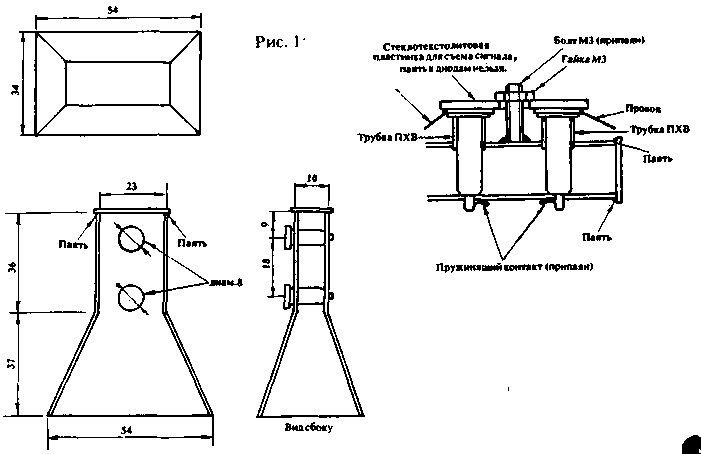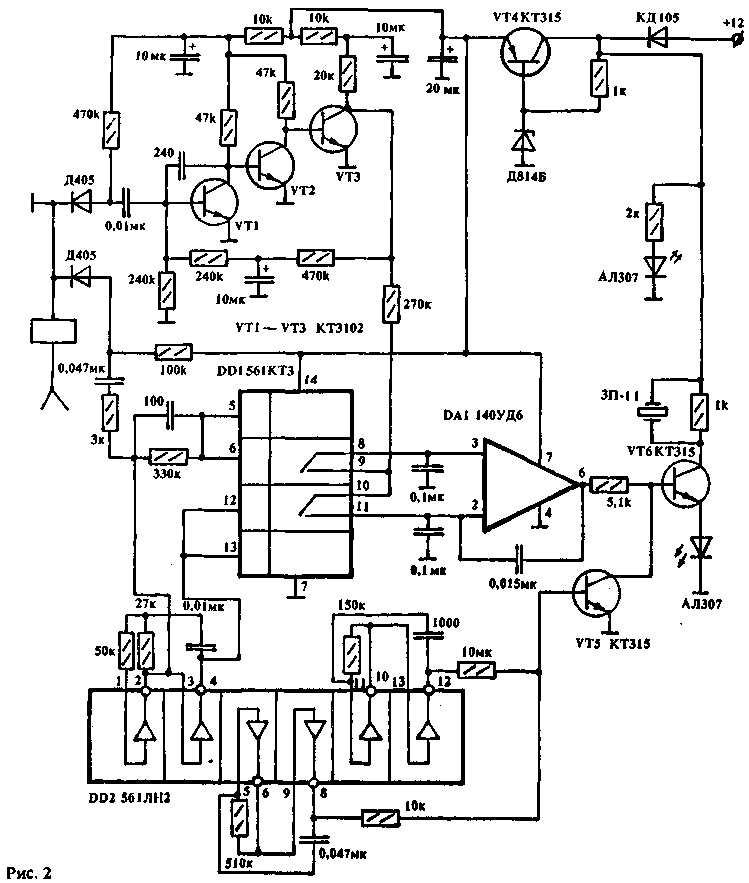I have made a large number of detectors microwave field in different designs and after article in "RL" No. 11/92, decided to share its experience in this area.
First, in the mentioned article, there are two annoying inaccuracies. First - denomination R24 - 820 Ohms, the second in the text nowhere States that the cathode VD1 is connected by screen sitelogo cable ground directly at VT1 (to reduce the interference on the bus "earth").
The microwave head is complicated to repeat at home because you need the turning and milling operations, so it is better to make a horn antenna (Fig. 1). It is easier and does not need scarce PTFE. The waveguide and the horn can be executed from thin copper or tinned sheet metal. You can use foil and glass fiber pre-polished foil and then cover it spinocerebellum flux (not oxidized).

Right under the antenna mounted Board with details. Processing schemes, there are so many, but I recommend shown in Fig.2, which requires no adjustments and has no adjustment controls.

In conclusion, I want to warn about the need for careful handling of microwave diodes. They are afraid of static electricity and the breakdown of the sensitivity of the microwave field decreases an order of magnitude or more. The insidiousness of the situation is that when checking the tester punched electrostatics diode behaves just as serviceable. Therefore, when working with microwave diodes need to follow the same precautions that you would with MOS transistors.
Author: Yu Ignatenko, Donetsk region, Yenakievo; Publication: N. Bolshakov, rf.atnn.ru






